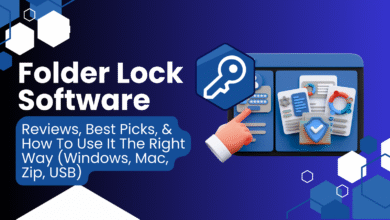Why Every Business Needs Customizable Cyber Security Services

The boardroom conversations I witness today center around a sobering reality: cyber threats have evolved from occasional nuisances into existential business risks that can eliminate decades of value creation overnight. Yet, despite this recognition, many organizations continue approaching cybersecurity with the same one-size-fits-all mentality that characterized enterprise software purchases of the past decade.
This misalignment between threat sophistication and defensive strategy represents more than operational inefficiency—it constitutes strategic negligence that exposes organizations to catastrophic risk. The enterprises that recognize cybersecurity as a custom-tailored business function, rather than a commodity service, consistently demonstrate superior resilience while their competitors struggle with breach recovery and regulatory penalties.
The fundamental issue isn’t whether organizations need cybersecurity—that question was settled years ago. The critical question facing today’s leadership teams is whether their security posture reflects their unique risk profile, business model, and competitive positioning. Generic security solutions, regardless of their technical sophistication, cannot address the nuanced vulnerabilities that define modern enterprise operations.
The Fallacy of Universal Security Solutions
Traditional cybersecurity approaches operate under the assumption that threats affect all organizations equally, leading to standardized solutions that address common vulnerabilities while overlooking critical business-specific risks. This approach fundamentally misunderstands how modern cyber adversaries operate and how business value gets created in different industries.
Consider the stark differences between a financial services firm and a manufacturing company. The financial institution faces sophisticated nation-state actors targeting transaction systems, regulatory compliance requirements spanning multiple jurisdictions, and customer data protection obligations that carry both legal and reputational consequences. The manufacturer confronts industrial espionage threats, operational technology vulnerabilities, and supply chain security challenges that could disrupt production and compromise intellectual property.
Generic security solutions treat these vastly different risk profiles as equivalent challenges, applying identical defensive strategies across dissimilar threat landscapes. This approach creates dangerous blind spots where business-critical assets remain inadequately protected while resources get allocated to addressing irrelevant threats.
The competitive implications become clear when examining breach recovery patterns. Organizations with tailored security approaches recover faster, suffer less operational disruption, and maintain stronger stakeholder confidence compared to those relying on generic solutions. This resilience differential translates directly into market advantage during crisis periods when operational continuity becomes paramount.
Industry-Specific Threat Landscapes
Each industry operates within distinct threat ecosystems that reflect unique value chains, regulatory environments, and competitive dynamics. Healthcare organizations face fundamentally different adversaries than retail companies, requiring security strategies that address specific attack vectors and compliance obligations.
Healthcare systems must protect patient data while enabling rapid information sharing among care providers, researchers, and administrative staff. The interconnected nature of healthcare delivery creates complex access requirements that generic security solutions struggle to accommodate without impeding critical care functions. Medical device security adds another layer of complexity, where patient safety concerns intersect with cybersecurity requirements in ways that standard enterprise solutions cannot address.
Retail organizations operate in environments where customer transaction data, inventory systems, and supply chain networks create different vulnerability surfaces. Peak shopping periods create unique operational pressures where security measures must scale dynamically without compromising customer experience or transaction processing capabilities.
Financial services firms navigate regulatory frameworks that demand specific security controls, audit trails, and incident response procedures. The interconnected nature of financial markets means that security failures can cascade across institutions, creating systemic risks that extend far beyond individual organizations.
Energy and utility companies face threats to critical infrastructure that could impact regional or national security. Their operational technology environments require security approaches that understand the unique characteristics of industrial control systems and the potential consequences of operational disruption.
Risk Profile Customization
Effective cybersecurity strategy begins with comprehensive risk assessment that considers business model characteristics, competitive positioning, and operational requirements. Organizations must understand not just what assets they possess, but how those assets create value and what their compromise would mean for business continuity.
Intellectual property protection requirements vary dramatically based on competitive dynamics and innovation strategies. A pharmaceutical company developing breakthrough treatments faces different IP protection challenges than a logistics company optimizing delivery routes. Security strategies must reflect these differences in asset value and threat sophistication.
Customer data handling requirements also demand customized approaches. B2B organizations with limited personal data exposure can implement different security measures than consumer-facing companies that process millions of transactions daily. The regulatory compliance landscape further complicates this picture, with different jurisdictions imposing varying requirements for data protection, breach notification, and security controls.
Operational continuity requirements present another customization dimension. Organizations with mission-critical systems that cannot tolerate downtime need security approaches that prioritize availability alongside confidentiality and integrity. This might mean accepting certain risks to maintain operational continuity, decisions that require careful analysis of business priorities and threat probabilities.
Scalability and Business Evolution
Modern businesses operate in dynamic environments where growth patterns, market expansion, and technological adoption create constantly shifting security requirements. Rigid security architectures that worked for smaller organizations often become impediments as businesses scale and evolve.
Geographic expansion exemplifies this challenge. Organizations entering new markets must adapt their security postures to address local regulatory requirements, threat landscapes, and operational constraints. A company expanding from North American operations into European markets must navigate GDPR compliance, different privacy expectations, and potentially more sophisticated state-sponsored threats.
Technological evolution creates additional customization requirements. Organizations adopting cloud computing, artificial intelligence, or Internet of Things technologies need security strategies that understand the unique risks and opportunities these technologies create. Generic security solutions often lag behind technological adoption, creating gaps between business capabilities and security coverage.
Merger and acquisition activity further demonstrates the need for customizable security approaches. Integrating acquired organizations requires security strategies that can accommodate different technology stacks, compliance obligations, and risk tolerances while maintaining adequate protection during transition periods.
Regulatory Compliance Complexity
The regulatory landscape surrounding cybersecurity has become increasingly complex, with different industries and jurisdictions imposing varying requirements that generic solutions struggle to address comprehensively. Organizations operating across multiple regulatory frameworks need security approaches that can demonstrate compliance with different standards simultaneously.
Healthcare organizations must comply with HIPAA requirements while potentially addressing state-level privacy regulations and international standards for research data protection. Financial services firms navigate SEC cybersecurity rules, state insurance regulations, and international banking security standards. Each regulatory framework carries specific requirements for security controls, incident reporting, and audit documentation.
The compliance burden extends beyond simply meeting minimum requirements. Organizations must demonstrate due diligence in their security approaches, showing regulators that their defensive strategies reflect reasonable responses to known threats and industry best practices. Generic solutions make this demonstration more difficult because they don’t reflect the careful analysis of business-specific risks that regulators expect to see.
Audit requirements also vary significantly across industries and regulatory frameworks. Some regulations require continuous monitoring and real-time reporting, while others focus on periodic assessments and incident response capabilities. Security architectures must accommodate these different audit approaches while maintaining operational efficiency.
Cost Optimization Through Targeted Protection
Customizable security services enable organizations to optimize their cybersecurity investments by focusing resources on protecting high-value assets while avoiding unnecessary expenditures on irrelevant threats. This targeted approach typically delivers superior protection at lower total cost compared to comprehensive generic solutions.
Asset valuation becomes crucial in this optimization process. Organizations must understand which systems, data, and processes create the most business value and face the highest risks. Security resources can then be allocated proportionally, with critical assets receiving enhanced protection while less valuable resources receive appropriate but cost-effective coverage.
Threat prioritization also enables cost optimization. Organizations facing sophisticated nation-state actors require different defensive investments than those primarily concerned with opportunistic cybercriminals. Understanding the threat landscape enables more effective resource allocation and better return on security investments.
The flexibility of customizable security services also reduces waste from over-provisioning. Generic solutions often include capabilities that specific organizations don’t need, resulting in higher costs without corresponding security benefits. Customized approaches eliminate this waste while ensuring adequate coverage of actual risks.
Implementation Strategy Considerations
Successful implementation of customizable cybersecurity services requires careful planning that balances security effectiveness with operational efficiency. Organizations must consider their existing technology infrastructure, staff capabilities, and business processes when designing custom security approaches.
Integration with existing systems presents both opportunities and challenges. Custom security solutions can be designed to work seamlessly with established business processes, minimizing disruption while enhancing protection. However, this integration requires careful analysis of current systems and potential security gaps that might emerge during implementation.
Staff training and capability development also demand attention. Customized security approaches often require different skills and knowledge than generic solutions. Organizations must invest in developing internal capabilities while partnering with external providers who understand their specific requirements.
Performance monitoring and continuous improvement become more complex with customized solutions. Organizations need metrics and assessment frameworks that reflect their unique risk profiles and business objectives rather than generic security benchmarks that might not capture relevant performance indicators.
When evaluating comprehensive IT cyber security services support, organizations should prioritize providers who demonstrate deep understanding of industry-specific risks and regulatory requirements. The ideal partnership combines technical expertise with business acumen, enabling security strategies that protect critical assets while supporting business objectives.
Conclusion
The cybersecurity landscape has evolved beyond the point where generic solutions can adequately protect modern enterprises. Organizations that recognize this evolution and invest in customizable security approaches position themselves advantageously compared to competitors who continue relying on one-size-fits-all defensive strategies.
Success in this environment requires strategic thinking that balances risk management with business enablement. The most effective security strategies treat cybersecurity as a custom business function that reflects unique risk profiles, compliance obligations, and competitive positioning rather than a commodity service that applies universal solutions to diverse challenges.
For organizations ready to embrace this strategic approach, partnering with experienced providers like Devsinc ensures access to sophisticated security expertise while maintaining the flexibility necessary to adapt to evolving threats and business requirements. The future belongs to organizations that can seamlessly integrate customized security capabilities with business operations, creating resilient enterprises capable of thriving in increasingly complex threat environments.




